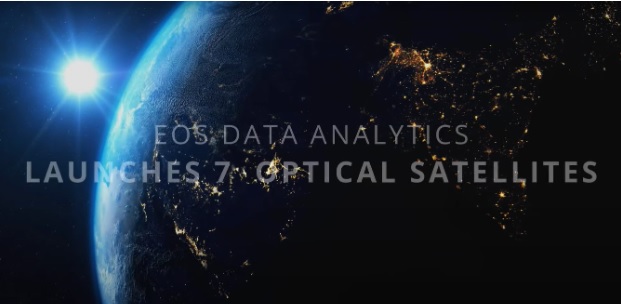EOS Data Analytics uses its deep knowledge, expertise, and experience to provide agriculture and other sectors with valuable and accurate geospatial data analytics. The company will launch the EOS SAT satellite constellation to empower agribusiness participants worldwide and increase the industry’s sustainability. These satellites will be the world’s first constellation focused on the needs of agriculture launched by a company that already has its own software products that work based on satellite imagery analytics.
Seven optical satellites equipped with 13 agro-related bands will be put into low earth orbit to provide farmers and other industry stakeholders with valuable insights. In combination with information from agronomists, soil data, reliable weather forecasts, historical data on fields productivity, and accurate analysis of satellite imagery the end user will get comprehensive information about the state of agricultural land.
Seven Satellites For Productivity And Sustainability Improvement
According to EOS Data Analytics, these satellites will make a full-operation cycle of geospatial data analysis possible: from obtaining data from its own source to processing and transforming it into valuable insights. The project was developed in partnership with Dragonfly Aerospace and required thorough planning.
Farming land monitoring will become the constellation’s primary task, enabling the EOS SAT to be a unique project among companies using remote sensing. The new satellite models will enable the company to improve monitoring accuracy and raise the availability of reliable satellite data to the end user.
The founder of EOS Data Analytics, Max Polyakov, noted that the company aims to provide farmers and other agribusiness participants with comprehensive information that plays a vital role in further sustainable development and ensuring food security. It is crucial because food production requires sustainable methods in the face of climate change. This goal is only possible to achieve with reliable data and geospatial data analysis in agriculture.
EOS SAT Constellation Timeline
The project will unfold in different steps, each taking place at their own time:
- 2021: Test readiness check. Flight and operational readiness test.
- 2022: EOS SAT-1 will be launched in December
- 2023: The company plans to launch three more satellites
- 2024-2025: Launch of three more satellites and achievement of the complete operations capability
Characteristics of EOS SAT Satellites
The satellites of this agricultural satellite constellation will move in a sun-synchronous orbit with an average power of 140 watts. Optical satellites with a design lifetime of 5-7 years will provide images in 1.4m panchromatic and 2.8m multispectral resolution.
The three days revisit time can help to improve the awareness of changes in the fields. Revisit within 24 hours is also possible upon request. EOS SAT constellation equipped with 13 band channels and their unique settings will help cover the most critical needs of the agricultural industry.
Launching the satellite constellation will enable EOS Data Analytics to improve the quality of data obtained from low Earth orbit and make them more accessible to farmers. Such updates will positively impact crop monitoring and classification, growth comparison, soil moisture measurement, weather forecast, and other data that EOSDA provides the agricultural industry.
New EOS Data Analytics opportunities include:
- near real-time data obtaining;
- 5-7 times increase of the orbital frequency;
- 2-8 times increase in image resolution;
- proprietary data for corporate agro-industrial models that will speed up the data processing;
- exclusive rights to the imagery of selected areas.
Satellites for Agribusiness Purposes
The benefits of satellite technology and near real-time geospatial data analysis for the industry include the ability for growers to make effective crop protection and resource management decisions based on accurate data. Thus, agriculture is being transformed into a more productive and sustainable industry.
Numerous options for practical applications of remote sensing technologies for agriculture include crop monitoring, forecasting, and natural disaster management. Furthermore, satellite technology enables the prediction of market trends and increases the transparency of supply chains.
The launch of the EOS SAT project and the launch of the first satellite of the future constellation into orbit will occur in December 2022. The project will enable EOSDA to provide farming business participants with field monitoring data.
Thanks to EOS SAT, the accuracy of the analytics data provided by the company for various niches in the agricultural industry will increase. This project will help to consume and allocate natural resources rationally and sustainably. It is also intended to reduce the negative impact of agricultural production on the environment. EOSDA will assist producers in making their products healthier and ensure global food security.
The mission of EOS Data Analytics is to harness the power of space technology and innovation for the benefit of humanity. The EOS SAT project will help make agriculture a more sustainable industry through reliable data from low Earth orbit. The constellation of satellites will enable the company to provide the agro-industry with valuable plant health, soil conditions, potential threats information, and other data that will help maintain food security and sustainability.
Media Contact
Company Name: EOS DATA ANALYTICS
Contact Person: Tatiana Vasiltsova
Email: Send Email
Country: United States
Website: https://eos.com/

